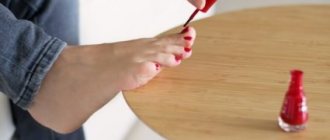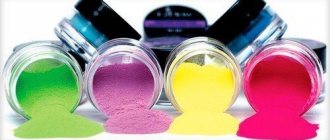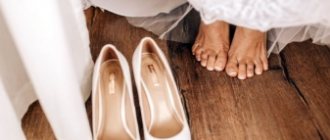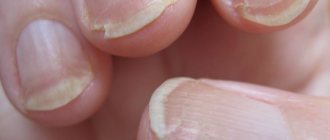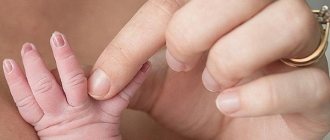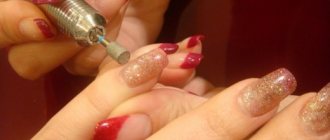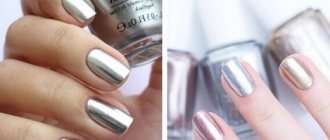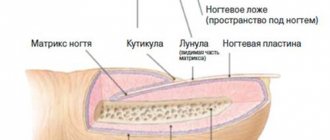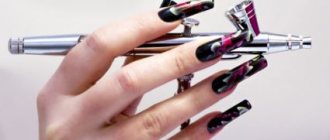Who needs a medical pedicure?
For prevention purposes, all people aged 35+, and especially women, need it.
And that's why:
- During normal walking, each leg receives a load 1.5 times the body weight, and when running - 5 times the body weight;
- Feet are natural shock absorbers; they constantly adapt and adapt to the position of the body, providing it with support when at rest and when moving;
- Feet reflect your overall health. Irregularities or pain in them often signal health problems;
- Women are 4 times more likely than men to have foot problems. Heels are considered to be the culprit.
These facts are a good incentive to take care of your legs and feet. Prevention is of great importance in this. In the absence of proper care and massage, the incredible stress that our feet experience every day will certainly make itself felt with age. Calluses, dryness, cracked heels, ingrown toenails, fungal infections are the consequences of insufficient foot care, poor choice and care of shoes.
According to statistics, only 2 out of 10 people regularly go for pedicures. Others turn to specialists when the condition of their feet causes pain, discomfort when walking, and interferes with a normal lifestyle.
For medicinal purposes, medical pedicure is necessary for people with the following problems:
- cracked heels, calluses, corns;
- increased sweating of the feet;
- ingrown nail plate;
- deformation of toes;
- thickening of the plantar part of the foot (hyperkeratosis);
- fungal infection (onychomycosis);
- thickening of the nail plate;
- traumatic nail injuries;
- inflammation of the nails and skin of the feet;
- skin lesions (non-healing ulcers) in diabetic foot.
Features of hardware pedicure
Among all the ways to maintain beauty and take care of the body, pedicure is far from the least important. The procedure done professionally differs from a similar one performed at home in a number of features:
- in less than an hour, the legs acquire an aesthetic appearance;
- the procedure is performed by a professional who will not cause harm to health;
- hygienic treatment of the skin of the feet;
- preventive measures to prevent the formation of fungus;
- proper nail treatment to provide protection against ingrown nails;
- getting rid of calluses;
- a measure to prevent flat feet and foot deformities;
- nail cleaning, providing protection against the proliferation of germs and dangerous bacteria.
There are two types of pedicure: classic and hardware. Each is aimed at caring for the nails and skin of the feet and preventing dangerous fungal diseases. Based on these two types, many techniques have been created, each of which has its own distinctive features.
Girls with thin skin, especially in the cuticle area and between the fingers, prefer to have a hardware pedicure. This is a procedure during which the feet and toes are treated using a dry method, unlike the classic version. The hardware technology uses an electric machine with special attachments that have a variety of effects on the skin. Devices from different manufacturers and types of models differ in speed. Some are equipped with a vacuum cleaner to collect loose small particles of skin. A hardware pedicure also differs from a classic one in that it eliminates the need to cut off the skin from the feet. Instead, using wide attachments, the skin on the feet and heels is first treated, and then using thin cutters, excess cuticle is removed. The second stage is sanding the skin on the treated areas.
Who performs the procedure
Medical pedicure master who is this?
This is a podiatrist, a specialist with a medical education, and not an ordinary master from a salon who has completed pedicure courses. He understands acute and chronic diseases that lead to abnormal appearance of the feet and nails. Has basic knowledge of pathologies of joints, muscles, blood vessels, nerves, and skin of the foot.
If you are looking for where to get a medical pedicure, you need to choose only salons or clinics that have a podiatrist.
How to do it
Medical pedicure is distinguished by gentle and thorough treatment. It is done using a special apparatus with various attachments (mills, grinding stones, burs). Use sterilized or disposable instruments, surgical gloves, and a mask.
The basic procedure for a medical hardware pedicure includes:
- Examination and assessment of the condition of feet and nails.
- Disinfection of skin, nails, treatment with a product to soften rough areas.
- Hardware treatment: removal of calluses, corns, keratinized areas.
- Treatment procedures (selected by the doctor depending on the problem).
- Shaping and polishing nails.
- Massage with the application of nourishing, moisturizing or medicinal compounds.
- Covering nails with medicinal varnish.
- Consultation on foot care, selection of cosmetic and therapeutic products, choice of shoes, orthopedic insoles.
The most common foot skin problems
- Hyperhidrosis (high humidity) is an office disease. Office workers spend the whole day in closed shoes - and while women have options, especially in the summer, men suffer from this more often in their formal boots.
- Those involved in fitness often complain about corns, deformation of the nail plates, and in athletes it reaches the last stage of flat feet. No matter how good the sports shoes are, loads still provoke problems with the feet.
- Fungus is a very common problem, especially among those who go to the pool. Experts recommend using a prophylactic product - it should be applied after you have swam and showered.
- Often after childbirth, as a result of hormonal changes, cracks appear and sweating increases.
- Damage to the nail plates occurs most often in the elderly, in people suffering from diabetes mellitus, and circulatory disorders.
“Many problems can be avoided if you take care of your feet regularly: apply cream, treat them - most often there is not enough time for this, but you only need five minutes a day,” laments the nail service specialist.
Medical pedicure for various pathologies
For various foot pathologies, the procedure has its own specifics.
See reviews of medical pedicure in Moscow and our podiatry center on Instagram.
For nail fungus
Nail fungus, or scientifically onychomycosis, occurs in 10–15% of people. Elderly people are more susceptible to the disease due to a decrease in the speed of metabolic processes and local immunity.
Many people are carriers of the fungus and don’t even know it. You can pick up an infection in a swimming pool, public showers, or gym. At first it occurs in a latent form, without manifesting itself in any way. Only a specialist can notice the early symptoms of onychomycosis. Testing a nail scraping for bacterial culture helps confirm the diagnosis.
Visible symptoms of onychomycosis include thickening and discoloration of the nail plate, the appearance of spots, stripes on it, and itching of the skin around the nail.
Unfortunately, nail fungus cannot be cured at home. You cannot do without medical help. The more advanced the infection, the more pronounced the damage to the nail plate and the longer it takes to treat. It is important to undergo preventive examinations to prevent infection.
Treatment of medical pedicure for fungus in Moscow in our center is carried out by cleaning the affected area, partially removing the nail plate, and treating the source of infection with antifungal ointments. Subsequently, home treatment and observation are prescribed. A new healthy nail grows within 6 months.
In severe cases, treatment takes up to 12 sessions. Improvements are visible after the first procedure. The treatment does not cause severe pain, only a feeling of discomfort. In case of a low pain threshold and severe pain, we use freezing for pain relief.
For diabetes
Diabetes mellitus is a serious disease that, if blood glucose levels are not controlled, causes damage to blood vessels, nerve endings, soft tissues and joints. On the feet, this manifests itself in the form of diabetic foot syndrome. At the same time, the sensitivity of nerve endings, vascular patency decreases, numbness is felt, nutrition and metabolic processes in the tissues of the foot deteriorate. The risks of injury, skin infection, and the formation of long-term non-healing wounds and ulcers increase.
When performing a pedicure, it is important for people with diabetes to be sterile and careful. The use of cutting tools is contraindicated. Only medical hardware pedicure is allowed. This procedure is safe for treating the skin of the feet and nails and improves their condition.
For ingrown toenails
An ingrown nail is an unpleasant and painful condition caused by an increase in the growth zone of the nail plate. The nail becomes wider and puts pressure on the surrounding soft tissue, which causes inflammation, severe pain, and discomfort when walking. Causes of ingrown toenails include:
- hereditary predisposition;
- overweight;
- increased sweating;
- fungal infection of the feet;
- pathology of the foot shape;
- uncomfortable shoes.
Treatment of ingrown toenails in our podiatry center is carried out using Fraser staples, which, after being fixed to the surface of the nail plate, control the direction of its growth. They are absolutely safe for the body and do not cause discomfort. Correction takes a long time, up to 5–6 months, as it is limited by the growth rate of the new nail plate.
For corns and calluses
Corns and calluses are often found in women who live by the principle “beauty requires sacrifice.” High-heeled shoes, tight socks, and uncomfortable shoes are the reasons for the appearance of such defects on the skin.
To maintain healthy feet, the heel height should not exceed 6 cm, the optimal height is 2 – 4 cm.
Also, calluses and corns can be caused by foot deformities, abnormal gait, skin diseases of the feet, excess weight, sports (for ballerinas, runners).
In women, calluses and corns are 10 times more common than in men. They appear in the form of rough, yellowish lumps. When pressing and walking they cause pain and discomfort.
A hardware pedicure helps to painlessly get rid of these formations on the toes, between the toes, and on the plantar part of the foot. Treatment of rough skin with attachments of different shapes and grain sizes removes rough areas without injury for healthy skin.
Foot skin problems and what a pedicurist should do if they exist
When there is a problem with the skin of the feet, the qualifications and experience of a pedicurist are very important, since not only the final result of the procedure, but also the prognosis often depends on his professionalism. The specialist should be able to identify the pathology, which is not within the competence of the salon services, but of a podiatrist or dermatologist, and recommend that you consult a medical center for an examination. Often, to ensure the desired result, the efforts of related specialists will be required.
Features of hardware foot treatment
Foot treatment is a procedure that involves sanding off layer after layer of dead skin until the surface is perfectly smooth. The technique differs from other types of foot treatment in that it excludes preliminary steaming, but involves the use of antiseptic agents and solutions that have a softening and exfoliating effect. During the procedure, the master primarily uses not a grater or file, but a device with rotating grinding attachments. They are selected individually depending on the situation. It is more convenient to treat cuticles using some types of burs; for heels, other models are preferable. The hardware part of the procedure is completed by applying antifungicidal agents.
Hardware treatment of the cuticle: how to do it and what are the advantages
Hardware processing of the cuticle occurs using a special cutter. During the procedure, only dead skin cells are removed, leaving the rest untouched. In this case, it is carried out using a dry method. Among the advantages of this impact:
- Safety, since the risk of injury is minimized and infection during the procedure is excluded;
- No preparatory activities, no steaming required. The procedure takes less time than alternative methods. You can get the desired result in 30 minutes, while a trimmed manicure or pedicure takes up to 1.5 hours;
- After hardware removal, the cuticle grows back more slowly than if it is cut.
The hardware procedure is the best option for people with thin cuticles and those who have superficial blood vessels. In addition, the ability to choose different attachment options and the power of the device means that this technique is ideal for treating rough areas of the skin, where the trimming method is difficult to cope with.
Pros and cons of hardware pedicure
Hardware pedicure allows you to eliminate all keratinized foot tissue and affected areas of the nail plates within a short time. The use of a technical device ensures a higher efficiency of the procedure compared to the use of improvised means, files and pumice. At the same time, hardware pedicure is a non-invasive technique, carried out without violating the integrity of the tissues. This effect is aimed at eliminating only pathologically changed areas, and therefore is characterized as painless. During the procedure, patients only feel the vibration of the attachments and the buzzing of the device.
However, the technique also has its drawbacks:
- Dependence of the results on the professional skills of the podiatrist and the technical features of the equipment;
- Despite obtaining the desired result in one session, there is a need for repeated approaches. They are usually carried out every 3-4 weeks, as the nail plate grows or the skin becomes rougher. It should be noted that if the procedures are carried out regularly, each subsequent one will be easier;
- There are a number of contraindications for the procedure. It should be postponed in the case of purulent skin lesions at the site of intended exposure, acute infectious diseases, exacerbation of chronic processes, mental disorders, etc. Pregnancy is also a contraindication for the use of hardware exposure.
An important technological feature of modern devices is the presence of a vacuum cleaner built into them, which allows you to effectively collect exfoliated particles formed during the procedure and ensure its safety.
Is it possible to get a pedicure if you have nail fungus?
Fungal infection of the nails, onychomycosis, is a disease of an infectious nature. One of the methods of complex treatment of pathology is hardware treatment of fungal nails . It is carried out in order to eliminate tissues affected by the fungal process and thin the nail plate. The procedure makes it easier for external therapy to penetrate under the nail plate, exerting a targeted effect on the pathogenic agent. Creating a more aesthetic appearance of the nail plate is secondary in this case.
Such an event should be distinguished from the well-known cosmetic procedure, which absolutely cannot be carried out in the presence of an infectious process. Salon events, manicures and pedicures, are contraindicated for nail fungus, since they are only cosmetic and will contribute to the spread of the infectious process.
At the same time, hardware treatment of the feet and toes in a specialized medical center is a procedure that can significantly speed up the healing process. It significantly increases the effectiveness of external agents, simplifying their delivery to the site of accumulation of the fungal pathogen. The onihotoilet procedure is recommended to achieve a therapeutic effect in the shortest possible time. This is also facilitated by the price of hardware treatment for fungal nails. It is quite acceptable so that every patient has the opportunity to use this service. Ignoring such an event will lead to the fact that treatment will take more than a year and will require long-term use of antifungal agents, often repeated courses.
Cracked heels: causes
The causes of cracked heels may be due to insufficient care, when too little attention is paid to scrubbing the surface epithelium and the use of emollient measures, the application of moisturizers and nutrients. However, a number of predisposing factors contribute to this development of the situation:
- excess weight, since the feet in this case experience additional stress;
- staying on your feet for a long time, and therefore the problem is most often found in people of certain professions, sellers, hairdressers, teachers.
In this case, trying to increase the surface area, the skin cells of the foot begin to rapidly divide, which leads to compaction of the surface layer, its coarsening, or hyperkeratosis. The thick layer of skin becomes less elastic. When walking, this creates conditions for injury. If compensatory mechanisms are ineffective, cracks form on the heels. The following factors contribute to the aggravation of this process:
- mechanical damage to the heels due to poor-quality pedicure procedures, uncomfortable shoes;
- disruption of metabolic processes in the body caused by insufficient intake of nutrients, vitamins, and microelements;
- deterioration in the absorption of nutrients due to pathology of the gastrointestinal tract;
- endocrine diseases, especially diabetes mellitus, damage to the thyroid gland, as well as hormone therapy for concomitant pathologies;
- damage to small blood vessels, hypertension;
- diseases accompanied by impaired innervation of the distal limbs;
- long course of antibiotic therapy.
To most effectively deal with the problem, you need not only to use cosmetics, but also to understand the cause of the defect, whether it is a consequence of insufficient care, or one of the signs of diabetes or skin diseases. A podiatrist or dermatologist deals with medical issues. At the same time, a specialist can prescribe the correct treatment only after finding out the cause-and-effect relationships.
The most effective diagnostic method is skin scraping and microscopic examination, during which it is possible to confirm or refute the fungal nature of the pathology. At the same time, taking into account all the predisposing factors, an integrated approach will often be required to obtain the most effective result. It will include mechanical impact, that is, hardware treatment of the feet, the use of external agents prescribed by a dermatologist, as well as measures recommended by an endocrinologist, gastroenterologist and other specialized specialists.
How to treat cracked heels during a pedicure
Pedicure for cracked includes a number of sequential actions:
- Preparation of personal protective equipment, for which the specialist puts on a gown, medical cap, mask, and gloves. The patient's clothing and exposed skin are also protected by a gown;
- Unlike the cosmetic procedure, there is no pre-soaking of the feet, and the initial stage of treatment is the application of an antiseptic solution to the skin of the foot;
- To improve the rejection of dead cells, products containing urea and salicylic acid are used. After completing the exposure, the doctor proceeds directly to the procedure itself, first scrubbing the skin, removing areas of hyperkeratosis using a disposable file, and then attaching a hardware effect. Processing occurs using various types of nozzles. A certain cone-shaped cutter allows you to open cracks, making them flatter, and smooth out sharp edges.
All experts know that deep cracks in the heels should not be eliminated in one procedure. Although each subsequent procedure will be easier and faster, you may need several to get the desired result.
Calluses
Dry callus is one of those defects that is treated not only at a cosmetology center, but also at an appointment with a podologist or dermatologist. This approach is correct, since specialists often have to carry out differential diagnostics with plantar warts, for which the treatment is significantly different; a large role in it is given to antiviral agents. At the same time, dry callus is characterized not only by an aesthetic defect. It causes pain when walking, and if injured, it can become infected, which significantly complicates the implementation of therapeutic measures.
The therapeutic approach for calluses is an integrated approach. It involves the use of external agents with keratolytic properties and mechanical action on the affected area. Topical application of products containing salicylic acid will significantly soften the callus tissue and facilitate its scrubbing. However, you can get an even more pronounced result if you turn to a hardware pedicure.
Corns
Corns are lumps that occur on the feet due to the accumulation of dead cells due to insufficient regeneration. The provoking factor in this case is usually tight, uncomfortable shoes. This is why the problem is most often found in women. The external difference between corns and calluses is their larger size.
Medical pedicure for corns is also carried out in several stages, since, having eliminated a large amount of thickened tissue in one session, one can expect an increase in regenerative activity and the rapid formation of areas of compaction again. To get the most effective correction result, patients often have to see a doctor not only to prescribe external remedies and perform hardware procedures, but also to create orthopedic shoes or insoles.
What types of foot skin will you work with?
Normal foot skin is characterized by the absence of corns and areas of callus. Its surface is flat and smooth, pink in color, the presence of cracks is excluded. However, in the summer, this surface also becomes somewhat rougher, and in some places, especially on the heels or pads of the toes, corns appear. This is due to dust particles getting into open shoes, which leads to increased regenerative processes, excessive formation of skin cells, and hyperkeratosis. In this case, the pedicurist will use the least rigid attachments when performing a hardware procedure. Sometimes it will be possible to get by solely with polishing actions, which are recommended, on average, monthly.
Skin that tends to be dry is a more common option. In this case, it is thicker and rougher to the touch, and has a yellow tint. The problem area is the heels; in addition, calluses are present on the pads of the toes. To eliminate the problem, more careful care is required; the use of scrubbing and emollients is indicated. Hardware pedicure is recommended twice a month. To obtain a more significant and long-term result, it is worth reconsidering your shoe preferences, choosing a more comfortable option, optimizing weight and motor load.
People most often turn to medical institutions for the services of podiatrists with problem skin on their feet, which is prone to injury and the formation of cracks. This approach is correct, since solving the problem will require an integrated approach, and often the participation of related specialists. They will help identify and eliminate predisposing factors that contribute to the negative development of the situation.
A large number of people need professional foot care. At the same time, the knowledge and practical experience of a podiatrist is more preferable compared to the services of pedicurists in beauty salons. When contacting a qualified specialist at a medical center, it will be possible not only to provide the necessary care, carrying out all actions without damaging healthy skin, but also to guarantee complete safety of the event. In this case, each patient can be confident that the procedure fully complies with sanitary and hygienic standards. Their strict observance and constant monitoring are one of the strict conditions of the work of a podiatrist. His competence is undeniable in relation to problem diagnosis and prevention issues.
